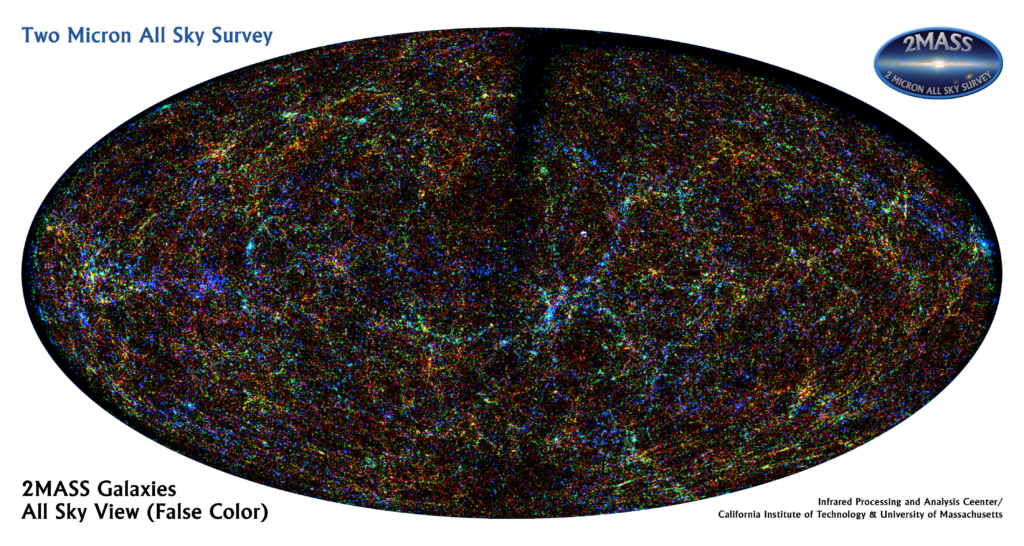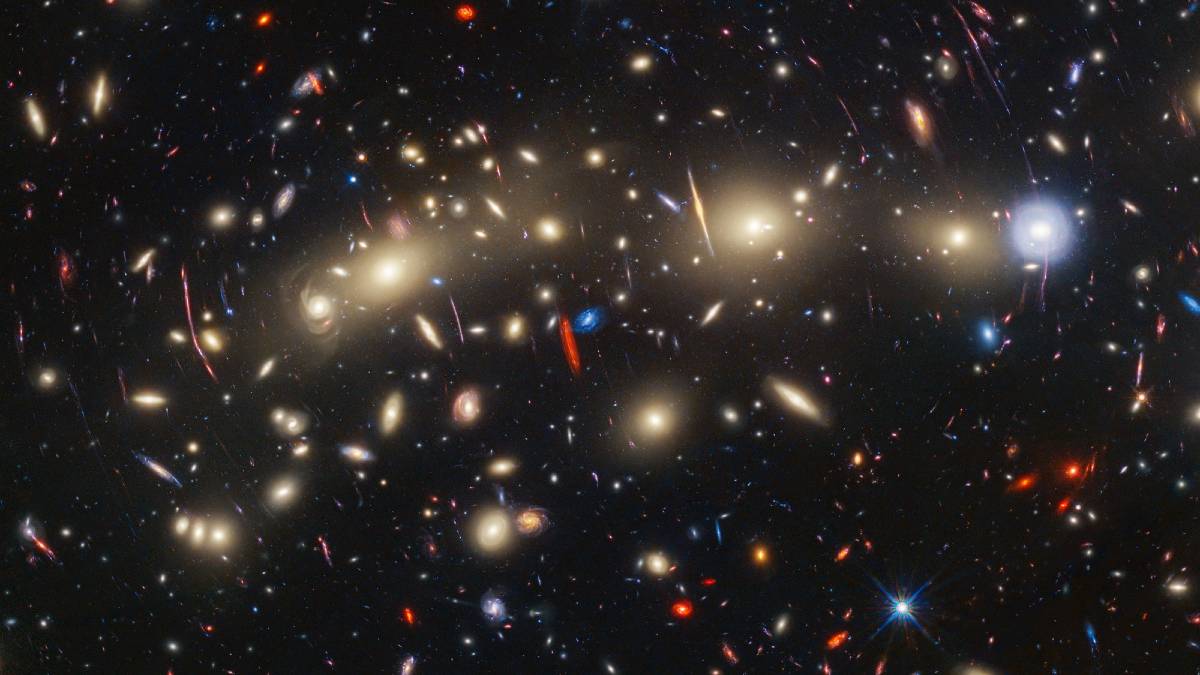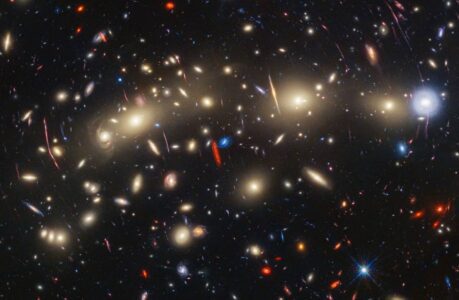Exploring the Cosmic Tapestry
The universe has always been an enigmatic and awe-inspiring expanse, filled with countless celestial bodies, each with its own unique story. Among the most captivating inhabitants of this cosmic arena are galaxies—vast collections of stars, gas, dust, and dark matter bound together by gravity. But have you ever wondered whether there is even Galaxy Distribution throughout the universe? Are they evenly scattered like stars in the night sky, or do they follow a more complex pattern? And what does that mean?
In this exploration of the cosmic tapestry, we delve deep into the distribution of galaxies, seeking answers to these questions. With the help of cutting-edge research and the latest astronomical discoveries, we embark on a journey that takes us from the scales of our local galactic neighborhood to the furthest reaches of the observable universe.
Galaxies: Building Blocks of the Universe
Before we dive into the distribution of galaxies, let’s first understand what galaxies are and their significance in the grand cosmic scheme.
What Are Galaxies?
Galaxies are colossal cosmic structures comprising billions to trillions of stars, planets, and various other celestial objects. They come in a multitude of shapes and sizes, ranging from the majestic spirals like the Milky Way to the elliptical giants and irregularly-shaped outliers. Our own Milky Way galaxy, a barred spiral, is just one among billions in the observable universe.
The Cosmic Building Blocks
Galaxies are not just random gatherings of stars; they are the fundamental building blocks of the universe. Within their vast realms, galaxies host diverse stellar populations, stellar nurseries, and even supermassive black holes at their centers. The interactions and dynamics within galaxies have a profound impact on the evolution of the cosmos itself.
Now, let’s shift our focus to the distribution of these awe-inspiring galactic structures.
Galactic Neighborhood: The Milky Way’s Domain
Proximity to Our Cosmic Home
Our cosmic journey begins with a closer look at our very own Milky Way galaxy. Situated within the Local Group—a collection of about 54 galaxies—the Milky Way is not alone in the cosmic neighborhood. The nearby Andromeda galaxy, also a spiral like our own, is one of the Milky Way’s notable companions.
Clustering in the Local Group
Within the Local Group, galaxies are not evenly distributed. Instead, they tend to form small clusters. For instance, the Milky Way and Andromeda are part of the Local Group’s most massive members, surrounded by smaller dwarf galaxies such as the Triangulum galaxy. These groupings suggest that galaxies are more likely to be found in proximity to one another, forming galactic communities.

Beyond the Local Group: A Cosmic Web Emerges
As we venture further from our galactic neighborhood, a more intricate and fascinating pattern begins to emerge—the cosmic web.
The Cosmic Web: A Marvel of Structure
The cosmic web is a vast network of galaxies, gas filaments, and dark matter that spans the observable universe. This intricate structure is not uniformly distributed, but rather resembles a complex spider’s web, with galaxies clustering along its filaments.
Superclusters and Voids
The primary features of the cosmic web are superclusters and voids. Superclusters are massive conglomerates of galaxies, while voids are vast, empty regions with relatively few galaxies. The distribution of galaxies within the cosmic web is far from uniform, with superclusters being hubs of galactic activity, surrounded by immense cosmic voids.
Cosmic Evolution: Shaping Galactic Distribution
To understand the distribution of galaxies, we must also consider the role of cosmic evolution and the forces that shape the universe over time.
Cosmic Expansion
One of the key factors influencing galactic distribution is the expansion of the universe. As the universe expands, galaxies move away from each other due to the overall stretching of space itself. This expansion affects the observed redshift of light from distant galaxies, a phenomenon known as Hubble’s law.
Gravity at Play
Despite the cosmic expansion, gravity remains the dominant force at smaller scales. The gravitational pull between galaxies within a supercluster or a galactic group counteracts the expansion, leading to the formation and maintenance of galactic structures.
The Great Attractor: A Galactic Mystery
In our quest to understand the distribution of galaxies, we encounter one of the most intriguing cosmic mysteries—the Great Attractor.
Mysterious Cosmic Anomaly
The Great Attractor is a massive gravitational anomaly located in the Hydra-Centaurus Supercluster. It exerts a gravitational pull on galaxies in our cosmic neighborhood, including the Milky Way. The exact nature and composition of the Great Attractor are still subjects of ongoing research.
Shaping Galactic Motion
This enigmatic force influences the motion of galaxies within our local region, leading to deviations from the uniform Hubble expansion. As a result, galaxies within the Great Attractor’s grasp move towards it, contributing to the intricate dance of galactic distribution.
Observational Insights: Mapping the Universe
To gain a clearer picture of galactic distribution, astronomers employ a range of observational techniques and cutting-edge technologies.
Galaxy Surveys
Large-scale galaxy surveys, such as the Sloan Digital Sky Survey (SDSS) and the Panoramic Survey Telescope and Rapid Response System (Pan-STARRS), have been instrumental in mapping the positions and properties of millions of galaxies. These surveys provide invaluable data for studying galactic distribution on a cosmic scale.

Redshift Surveys
Redshift surveys measure the redshift of light from distant galaxies, allowing astronomers to determine their velocities and distances. These surveys reveal the complex flow of galaxies within the cosmic web and provide insights into the large-scale structure of the universe.
Cosmic Microwave Background
The cosmic microwave background (CMB) radiation, a remnant of the Big Bang, also offers insights into galactic distribution. Tiny fluctuations in the CMB reveal the seeds of cosmic structure that eventually led to the formation of galaxies and their distribution.
Galactic Habitability: A Cosmic Goldilocks Zone
As we continue our journey through the universe, we encounter a crucial question—does the distribution of galaxies impact the potential for habitable planets and the existence of extraterrestrial life?
Galactic Zones of Habitability
Galactic distribution plays a significant role in the concept of galactic habitability zones. These zones are regions within galaxies where conditions are conducive to the formation of stars, planets, and the potential for life. Factors such as distance from the galactic center and the presence of heavy elements influence a galaxy’s habitability.
Cosmic Goldilocks Zone
The Milky Way’s position in the cosmic web, neither too close to the chaotic center nor too far out in the desolate voids, places it in a cosmic Goldilocks zone—a region where the conditions for life are just right. This zone may play a pivotal role in the prevalence of life in our galaxy.
Extraterrestrial Search: Implications of Galaxy Distribution
The search for extraterrestrial life is intrinsically linked to our understanding of galactic distribution. How does the distribution of galaxies affect the search for intelligent civilizations beyond our own?
The Fermi Paradox
The Fermi Paradox poses a perplexing question: if the universe is teeming with galaxies and potentially habitable planets, where are all the extraterrestrial civilizations? The distribution of galaxies may hold some clues to this cosmic conundrum.
Rare Earth Hypothesis
The Rare Earth Hypothesis suggests that Earth-like planets capable of supporting complex life may be rare due to specific galactic conditions. Factors such as the abundance of heavy elements, the presence of nearby supernovae, and the stability of planetary orbits are all influenced by galactic location.
Beyond the Observable Universe: A Cosmic Mystery
Our exploration of galactic distribution has taken us to the furthest reaches of the observable universe, but what lies beyond? The nature of the universe beyond our observational limits remains a tantalizing mystery.
The Observable Universe
The observable universe is the portion of the cosmos that we can detect and study using telescopes and other instruments. Its boundary, known as the cosmic event horizon, is defined by the finite speed of light and the age of the universe.
The Unobservable Universe
Beyond the cosmic event horizon lies the unobservable universe—a vast expanse that remains hidden from our view. The distribution of galaxies in this uncharted territory is a subject of speculation and theoretical exploration.
Galaxy Distribution
In our quest to understand the distribution of galaxies throughout the universe, we have journeyed from the familiar confines of our Milky Way to the intricate web of cosmic structures that define our cosmic neighborhood. We have explored the forces of cosmic expansion and gravity that shape galactic distribution and marveled at the enigmatic Great Attractor. We have also considered the implications of galactic distribution on habitability and the search for extraterrestrial life.
Yet, the universe remains an ever-expanding enigma, with mysteries that extend beyond our observational limits. The distribution of galaxies, a fundamental aspect of the cosmic tapestry, continues to captivate the imagination of astronomers and scientists worldwide.
As we continue to push the boundaries of human knowledge and explore the cosmos with ever-advancing technology, one thing is certain—the story of galactic distribution is far from complete, and the universe has many more secrets to reveal.

